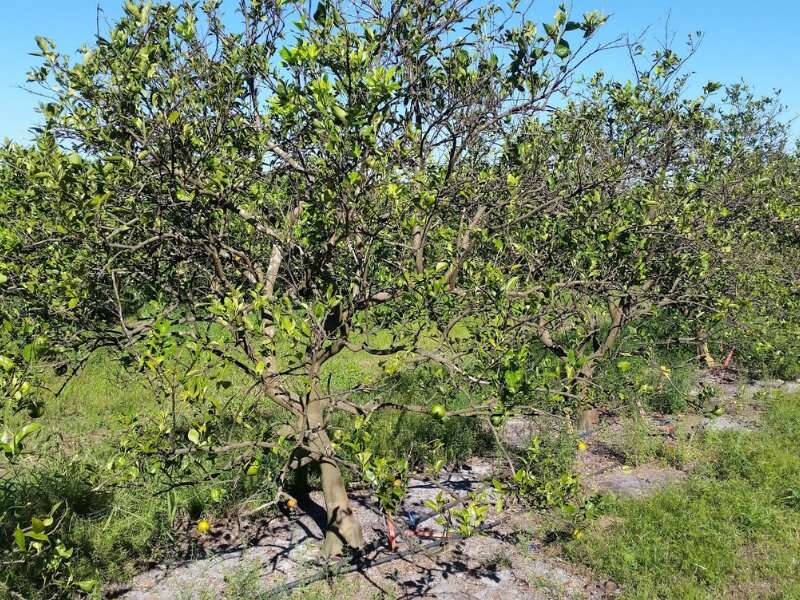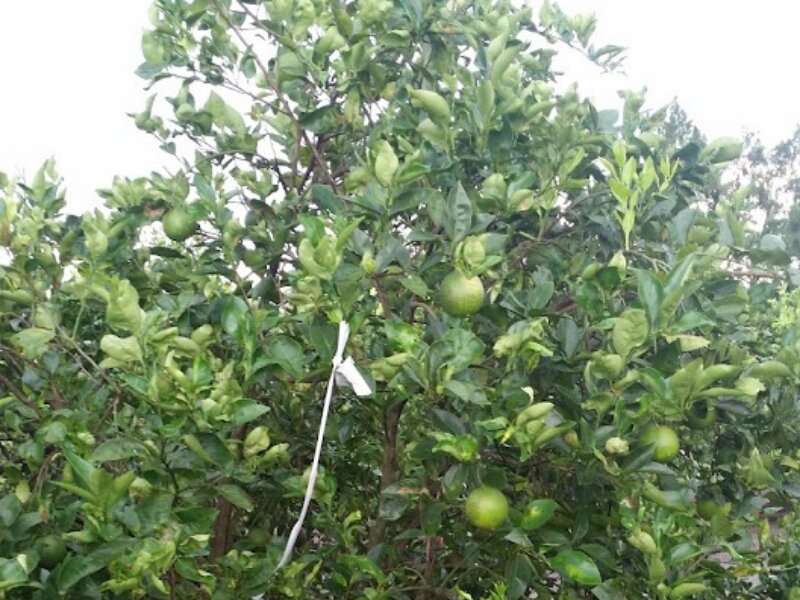Managing citrus groves infected with disease by adjusting the timing of their fertilization

Drinking orange juice with breakfast has been a staple in kitchens for years. But a disease has been infecting citrus trees and reducing yields, threatening the supply. Called "citrus greening," it causes trees to decline and die within three years. The disease destroys the production, appearance, and economic value of citrus trees and their fruit. There is no cure.
You might drink your orange juice for its nutritional value: it's high in Vitamin C and contains good amounts of potassium, too. Nutrients in plants, like orange trees, are just as important in their growth and health.
Researchers at the University of Florida applied that nutrition logic to some citrus groves and have found a way to manage groves infected with citrus greening by managing the timing of their fertilization. They recently published their research in Soil Science Society of America Journal.
By splitting the application of nutrients to citrus rootstocks, they have been able to improve plant growth鈥攍eading to improved fruit yields.
Citrus greening is spread by the Asian citrus psyllid, a tiny insect that feeds on the leaves and stems of citrus trees. When a citrus psyllid feeds on an infected tree, it picks up the bacteria and can transfer it to another tree during feeding forays. Although the fruit is still fine to eat (or drink), the tree withers and dies.
Alisheikh Atta and his colleagues researched the timing of the application of various nutrients, including nitrogen, calcium, and magnesium. "Leaf nutrient concentrations, tree growth, and fruit yield and quality are interrelated in many aspects," says Atta.

"We found that splitting the application of nitrogen potentially lowered the citrus trees' requirements for this nutrient," says Atta. "Moreover, split applications enhanced the uptake of the other leaf nutrients. The results indicated that leaf magnesium concentrations were deficient during most of the seasons and suggested the need for sustainable fertilization to meet the optimum nutrient range."
The team performed their study at the University of Florida's Immokalee location from January 2017 to December 2019. They planted two types of rootstocks in the same type of soil and managed them the same. The trees were originally planted in 2006. At the start of the study, a high degree of citrus greening infection was present鈥攄etermined by collecting leaves and testing for the bacteria.
They performed different types of nutrient management over the study period. This included different rates of nitrogen application and application of secondary nutrients like calcium and magnesium. Calcium assists plants with leaf and root growth as well as cell division and nutrient uptake. Magnesium assists with photosynthesis and how the plant activates enzymes. Nitrogen is an essential nutrient, important for plant growth.
The study found that citrus trees did well with the split application of nutrients. The trees grew more vigorously鈥攚ith more leaves and improved fruit yields. The availability of essential nutrients increases vegetative growth. Vegetative growth improves fruit yield and quality. They also found that more fruit could be harvested when trees were treated with secondary macronutrients like calcium and magnesium.
Future research could focus on reducing "fruit drop" with the split application of essential nutrients. This is the premature dropping of unripe fruit from a tree. This could increase fruit yield under citrus trees affected by citrus greening.
More information: Alisheikh A. Atta et al, Split application of nutrients improve growth and yield of Huanglongbing鈥恆ffected citrus trees, Soil Science Society of America Journal (2021).
Journal information: Soil Science Society of America Journal
Provided by American Society of Agronomy

















